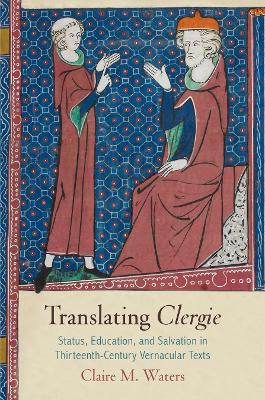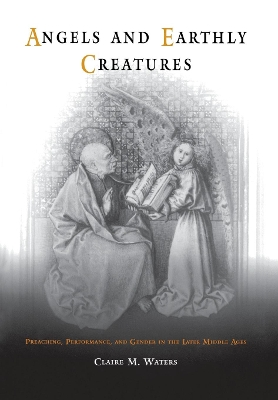The Middle Ages
2 total works
In Translating "Clergie", Claire Waters explores texts in French verse and prose from England and the Continent that respond to the educational imperative implicit in the Fourth Lateran Council's mandate that individuals be responsible for their own salvation. These texts return repeatedly to the moment of death and individual judgment to emphasize the importance of the process of teaching and to remind teacher and learner of their common fate.
The texts' focus on death was not solely a means of terrifying an audience but enabled lay learners to envision confrontations or conversations with dead friends, saints, or even God. Such dialogues at the point of death reinforced the importance of the dialogue between teacher and learner in life and are represented in such varied works as doctrinal handbooks, miracles of the Virgin Mary, retellings of the Harrowing of Hell, and even fabliaux—tales of wit and reversal—in which it is possible to argue one's way into Heaven. Lively stories that featured minstrels dicing with saints, friends returning from the dead, and thieves teaching the prophets offered a model for laypeople considering how to put their Christian learning into practice and perhaps to teach others.
Rather than being seen as a challenge to ecclesiastical authority, lay learning in these texts is depicted as hopeful, comic, and affectionate. By examining informal works of Christian instruction used outside institutional teaching contexts to convey the learning of the schools to the parishes, Waters shows how lay learners could assume the role of disciple or student in a way previously available only to monks or university scholars.
Texts by, for, and about preachers from the twelfth to the fourteenth centuries reveal an intense interest in the preacher's human nature and its intersection with his "angelic" role. Far from simply denigrating embodiment or excluding it from consideration, these works recognize its centrality to the office of preacher and the ways in which preachers, like Christ, needed humanness to make their performance of doctrine effective for their audiences. At the same time, the texts warned of the preacher's susceptibility to the fleshly failings of lust, vainglory, deception, and greed. Preaching's problematic juxtaposition of the earthly and the spiritual made images of women preachers, real and fictional, key to understanding and exploiting the power, as well as the dangers, of the feminized flesh.
Addressing the underexamined bodies of the clergy in light of both medieval and modern discussions of female authority and the body of Christ in medieval culture, Angels and Earthly Creatures reinserts women into the history of preaching and brings together discourses that would have been intertwined in the Middle Ages but are often treated separately by scholars. The examination of handbooks for preachers as literary texts also demonstrates their extensive interaction with secular literary traditions, explored here with particular reference to Chaucer's Canterbury Tales.
Through a close and insightful reading of a wide variety of texts and figures, including Hildegard of Bingen, Birgitta of Sweden, and Catherine of Siena, Waters offers an original examination of the preacher's unique role as an intermediary—standing between heaven and earth, between God and people, participating in and responsible to both sides of that divide.

